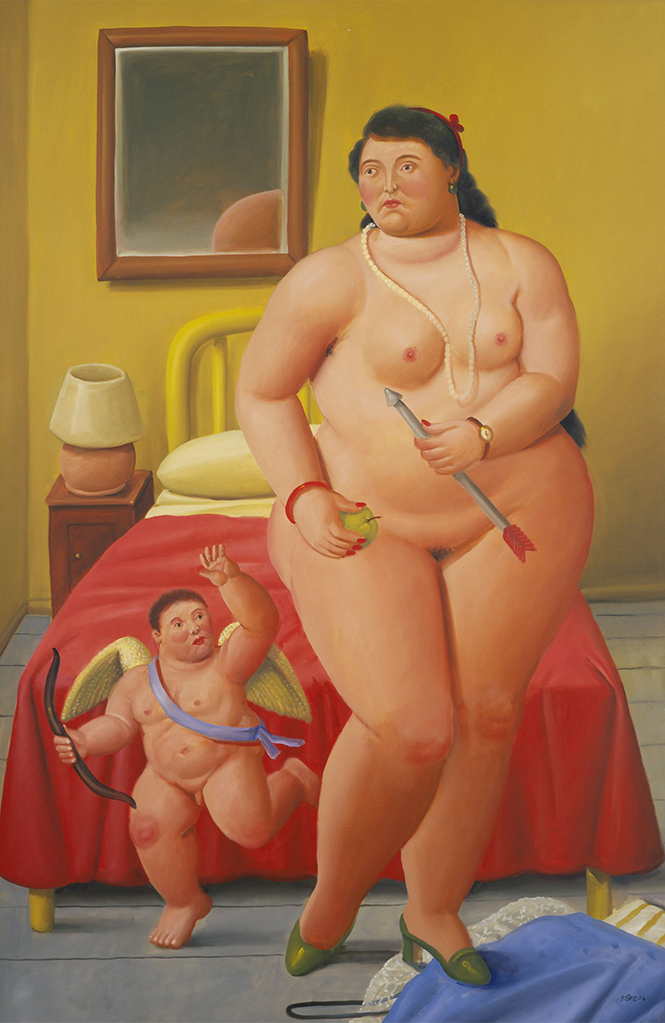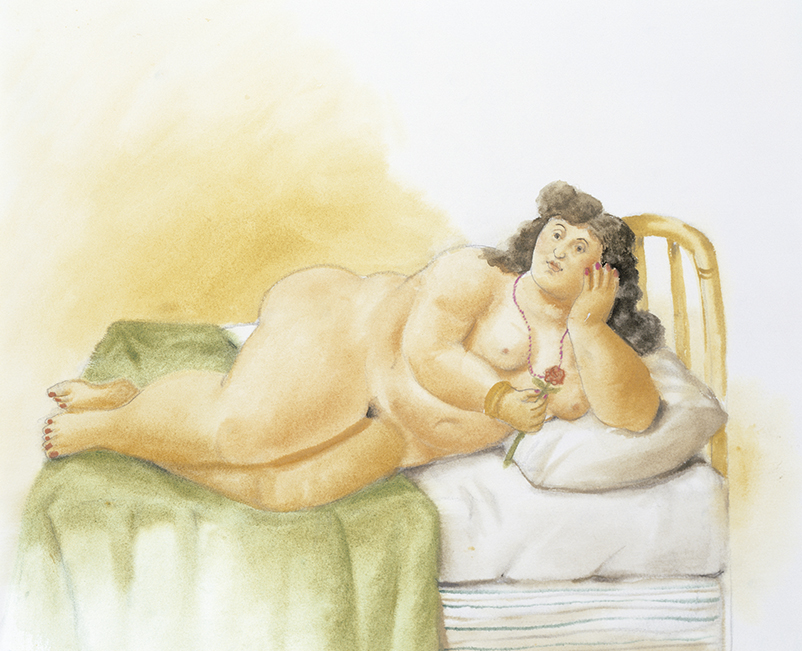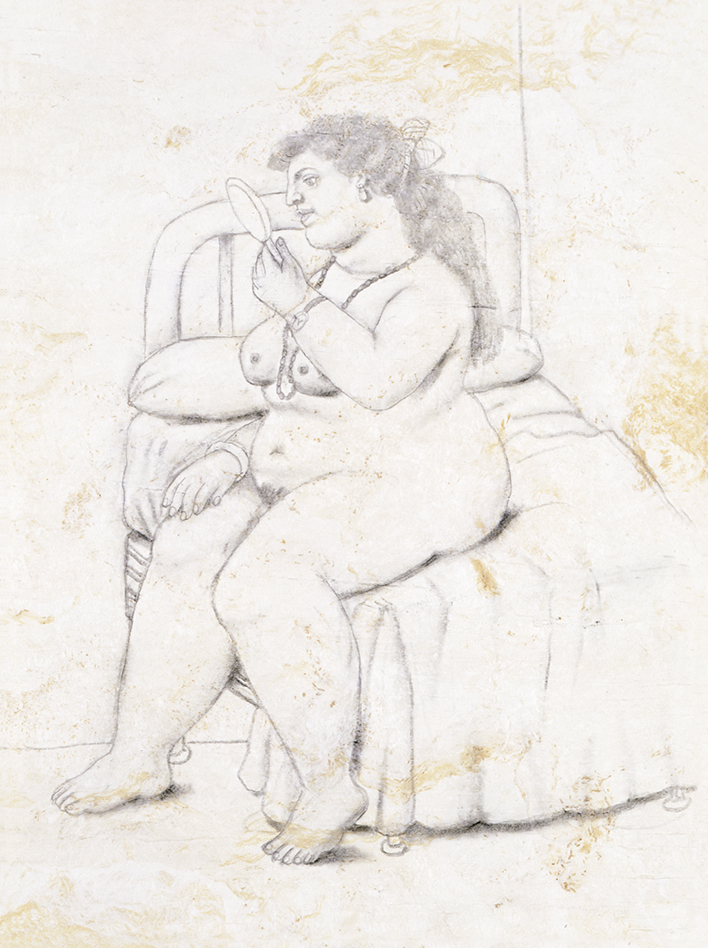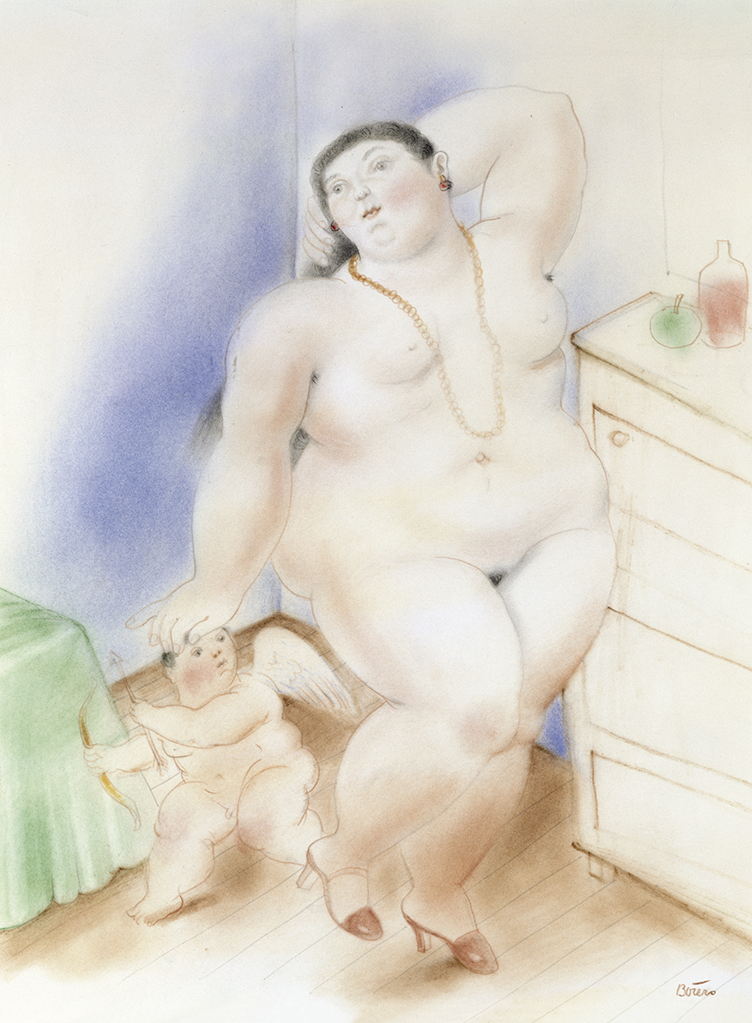Venus, the goddess of lve, in Botero’s art
Botero’s creations are often reminiscent of the mythological world. This influence is evident in several of the drawings included in this exclusive work, where he has drawn on the tradition of Renaissance Venuses to compose his figures.
Inspiration and earthly love
Fernando Botero visited the great museums of Europe during his formative years and assimilated one of his most significant influences: the masters of the Italian Renaissance.
His work features references to themes from classical mythology, themes that had already been explored by artists like Botticelli and Titian. For example, his drawings include his personal vision of Venus, goddess of love and beauty.
The spirit of these portraits suggests the attitude and iconography of the Venuses of antiquity, although women are depicted in everyday scenes. In keeping tradition, Venus is sometimes accompanied by Cupid.

Venus and Cupid, 2006. Oil on canvas
Who was Venus?
The cult of Venus originated in ancient Rome, taking after the Greek Aphrodite. She is the goddess of love, beauty and fertility. She inspired classical works like the sculpture of the Venus de Milo (from the Hellenistic period) and figured prominently in the frescoes that adorned Roman homes.
She represents, in short, all that is mysterious and divine in the love that inspires and unites mortals. An essentially benign deity, she is associated with sensuality, romantic love, sexual desire and mutual affection, but in Rome she was also associated with prosperity and victory.
Cupid is one of Venus’s sons. Mythology gave him the role of unleashing passionate love with his golden arrows, or indifference with his bronze arrows. He is one of the few deities of antiquity whose symbolism is still associated with a specific date in our calendar: Valentine’s Day.
Botero and the goddess of love
Examples of this personal interpretation of Venus can be found in Botero’s Women, an exclusive ARTIKA Artist’s Book that pays homage to the feminine universe.

Woman on a bed, 1999. Watercolour on paper.
This nude conforms to the rules of Renaissance Venuses, where allusions to the mundane and ephemeral are always present. It is a scene that evokes the iconography of Titian’s Venus.

Venus, 2001. Pencil on paper
The title refers explicitly to the character. Her expression (a slight smile as she captures her image in the mirror) and her nudity emphasised by the jewels are the elements that connect this woman with the tradition of the famous “profane Venuses”.

Venus, 1989. Coloured pencil on paper
Here, the goddess of love is accompanied by Cupid. Botero interprets the typical features of the female models of the Renaissance and translates them into a contemporary setting.
Botero en ARTIKA
Botero’s Women is an Artits’s Book that features a selection of drawings by the master with a common theme: the representation of women in all their facets, ages and situations.
An exclusive work that encapsulates Botero’s style through suggestive and vibrant images.
Limited edition of 2,998 copies.
